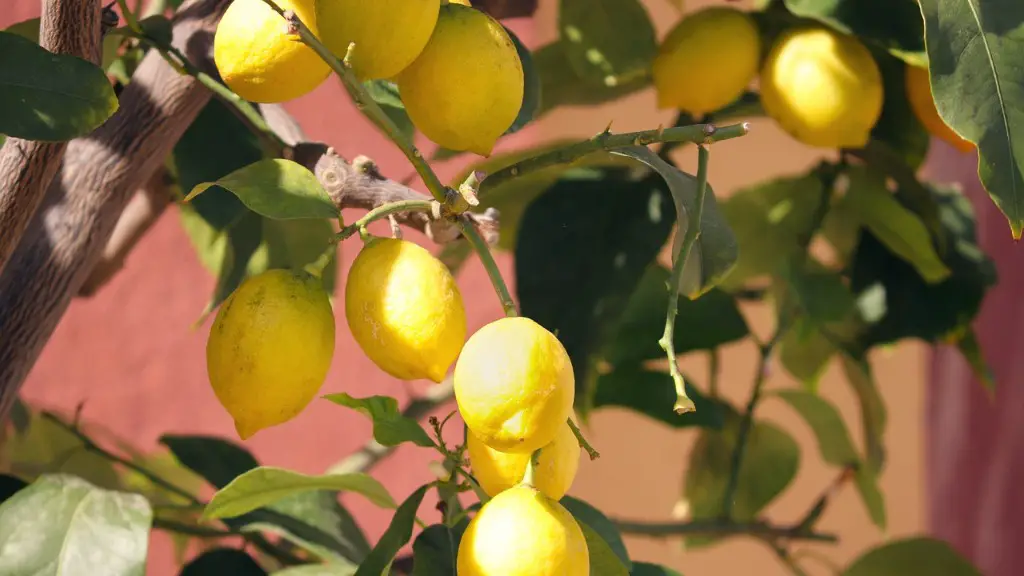Avocado trees are an important crop for many cultures around the world, providing a wealth of benefits to both consumers and producers. They’re also a great choice for home gardeners looking to create a unique and attractive landscape. But if you’re considering planting an avocado tree in your yard, you need to know how to transplant it properly and safely. This article will guide you through the process and provide you with the tools you need to successfully transplant an avocado tree into your home garden.
Choose an Appropriate Location
When selecting the location for your avocado tree, it’s important to choose an area that has plenty of direct sunlight. This will ensure that your tree will receive the necessary light it needs to produce healthy fruits. Additionally, it’s important to avoid areas that tend to be damp, as this can lead to root rot. A well-drained soil is ideal for transplanting an avocado tree. Once you have chosen an appropriate location, prepare the soil by adding nutrients and making sure it is free of weeds and other foreign materials.
Properly Digging and Transplanting
When it comes to digging up and transplanting an avocado tree, it is important to be gentle and careful. Begin by digging a circle around the base of the tree and gently work your way around to dig up the entire root ball. Next, transfer the root ball to the new location, ensuring that the roots are still intact and not damaged. Plant the root ball in the new location and backfill the soil around it. Water the tree thoroughly to ensure the soil is completely moist.
Stake the Tree
Once the tree has been transplanted, it is important to stake it to ensure it is properly supported. Staking the tree will help keep it upright while the roots are adjusting to the new location. Drive wooden stakes into the ground around the tree on two opposite sides and tie the tree to the stakes. This will help keep the tree in place while the roots are re-establishing themselves and the tree is adjusting to the new environment.
Tending to the Tree
Once you have successfully transplanted an avocado tree into your home garden, it is important to properly tend to it. Keep the tree adequately watered and make sure it is receiving adequate sunlight. Additionally, add mulch around the base of the tree to keep the soil moist and deter weeds and other pests. Prune the tree regularly to encourage healthy growth and look for signs of pests and disease. Keeping your avocado tree well cared for will ensure a bountiful harvest of delicious avocados.
Fertilizing and Protection
In addition to tending to your avocado tree, it is important to fertilize it regularly. Fertilizing will provide the tree with the proper nutrients it needs to grow and produce healthy fruits. Additionally, it is important to protect the tree from extreme temperatures and inclement weather by covering it with burlap or shade fabric. This will help keep the tree safe and healthy in the long run.
Conclusion
Transplanting an avocado tree is not a difficult process, but it requires patience and attention to detail. If you follow these steps, you can successfully transplant an avocado tree into your home garden and enjoy a bountiful harvest of fresh avocados. Take the time to properly tend to your tree and provide it with the necessary nutrients, sunlight, and protection to ensure a healthy and happy tree for years to come.
Benefits of Growing an Avocado Tree
Growing an avocado tree brings a variety of benefits to both producers and consumers. Avocados are a nutrient-rich food that provide a wide range of essential vitamins and minerals. Research has also shown that consuming avocados can reduce the risk of certain chronic conditions, such as cardiovascular disease, diabetes, and obesity. Additionally, growing avocados can be a great source of income for small-scale farmers and can help to boost local economies. The abundant fruits of an avocado tree are truly a gift that keeps on giving.
Nurseries & Saplings
When it comes to transplanting an avocado tree, it is important to purchase a sapling from a reputable nursery. Saplings should be inspected for signs of disease or damage prior to purchase. Make sure the roots are healthy and not overcrowded, and the sapling is free from pests. It is often more cost-effective to purchase a sapling from a nursery rather than digging up an existing avocado tree, as it is more likely to survive the transplanting process.
Seed Planting
For the avid gardener, the process of growing an avocado tree from a seed can be both rewarding and educational. While it can take several years before the tree produces fruits, it is a great way to observe the process of growth and nurture the tree from seed to maturity. It’s important to soak the seed in water overnight, bury it up to the neck in damp soil, and place it in an area that receives plenty of sunlight.
Timing is Everything
When it comes to successfully transplanting an avocado tree, timing is key. The best time to transplant an avocado tree is during the dormant season, which is typically during the end of winter and beginning of spring. Transplanting an avocado tree during this time will decrease the risk of shock to the tree, as temperatures and soil moisture levels tend to be more consistent. Additionally, it’s important to watch for signs of stress such as wilting leaves and yellowed foliage.
Fungal Prevention
When transplanting an avocado tree, it’s important to inspect the tree for any signs of fungal infection. Common symptoms include brown, withered leaves and dark, splotchy stems. If an avocado tree is infected with a fungal disease, it’s important to treat it prior to transplanting to ensure the infection does not spread. Treating an infected tree can involve pruning, fertilizing, and applying a fungicide to the affected areas.

